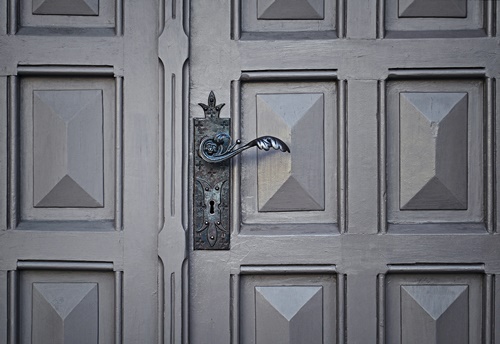
Fixing Broken or Damaged Locks and Keys
For many types of locks and keys, numerous repair and replacement options are available. Locksmiths can extract broken keys, free up frozen locks, reprogram digital access control systems, replace internal mechanisms, and cut new keys to solve the many problems locks can pose. They can even remove existing locks and replace them with new ones in most situations. When it comes to antique locks, though, many of the standard solutions aren’t suitable. If you’re interested in a locksmith to help with antique or vintage lock issues, a different set of measures may be required.
Why Do Antique Locks Have Different Requirements?
Quite a few people assume that since antique locks tend to have simpler designs than newer ones, they should be easy to repair. Replacing them might even be the better alternative. After all, doing so would provide an updated appearance and more effective security. While both points are true, repairing antique locks isn’t always as easy as it may seem, and replacing them isn’t necessarily an option.
Older locks were often made by hand as opposed to the mass-produced varieties that are so common today. That means their parts aren’t always interchangeable. You can’t just order an identical replacement or spare parts to use for repairs. On the other hand, replacing vintage and antique locks isn’t acceptable in all situations. This is typically the case with heritage houses, historical buildings, and other sites with significant histories behind them. Some property owners simply want to preserve the aesthetic appeal and nostalgia of the antique locks they currently have in place.
Because of all that, replacing vintage locks just isn’t possible in many instances. Repairing them takes special measures and requires a distinct range of skills and experience. Failing to follow proper protocol with those locks could hamper their appearance and detract from their value. It could even destroy the locks altogether, and because of their age and uniqueness, similar replacements just aren’t available. Locksmiths may even have to use their knowledge, tools, and equipment to create their own replacement parts to repair old locks.
What Types of Antique Lock Issues Can Be Resolved
Several types of antique lock problems can be remedied with the right locksmith on your side. Since those locks are so distinct, it’s important to proceed with caution, though. Otherwise, you might cause irreparable damage and destroy the entire aesthetic of the piece. Take a look at some of the common problems that arise with old locks and their potential resolutions.
Seized Locks
Seizing is one of the most prevalent problems with old locks. They often go neglected for years or even decades. Over time, the internal mechanisms of the locks freeze up. In turn, they won’t budge even if you happen to have the right keys for them. Gentle lubricants can sometimes remedy this issue, but using the right types of lubricants is essential. Some can cause further damage to the lock or its finish. In some cases, the lock will need to be carefully dismantled, repaired, and put back together. Replacement parts may need to be fashioned for it as well to make the repairs effective.
Broken Locks
Older locks often have varying levels of damage as well. Some are completely falling apart or missing vital internal components. Others simply have small cracks, dents, or chips that detract from their appearance. These types of damage can often be repaired though it’s not always a simple process. The right tools and materials must be used to restore these locks to their original look and functionality. Again, repairs and restorations may require dismantling the lock and creating handmade replacement parts to solve the problem.
Missing Keys
When it comes to modern locks, having a replacement key made is a simple process. You can go to the local hardware store and have a new key cut. That’s not always true when replacing missing keys for vintage or antique locks. They often require skeleton keys as opposed to their modern-day counterparts. Locksmiths may have to make the appropriate key for the lock in question by hand and make numerous adjustments to ensure it works properly.
Cleanup and Restoration
For some antique locks, rust and age are the primary issues. They just need to be cleaned, polished, and refinished. That can be easier said than done, though. Polishing them too much or using the wrong cleaning and rust removal solutions on them can cause serious damage. As is the case with other antique lock problems, extreme caution must be used to prevent additional issues and avoid destroying the lock altogether.
All Things Considered
Antique locks may have fairly simple internal designs, but they’re often ornate and beautiful pieces. Even those with more simplistic appearances have a certain amount of charm and nostalgia. That being said, repairing and restoring them isn’t usually a simple feat. The process can be complex and requires a great deal of care, patience, and specialized knowledge.
Antique lock repair can take more time and effort than the same measures for newer locks. They may be a bit more expensive as well. Still, in most cases, antique lock can be fixed as long as the damage or deterioration isn’t too severe. Whether you own an authentic Victorian home, are in charge of restoring a historical church, or simply want to transform a vintage padlock into a functional piece of home decor, a locksmith may be able to help.
